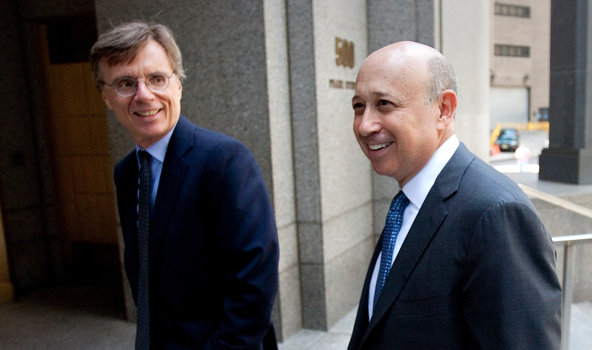LONDON – Barclays said on Sunday that its chief financial officer and its general counsel would resign, the latest departures after the British bank’s involvement in a series of scandals, including an investigation into the manipulation of global interest rates.
The announcement comes less than two weeks before Barclays is to announce a far-reaching overhaul of its business. The finance chief, Christopher G. Lucas, and the group general counsel, Mark Harding, will remain in their jobs until the bank appoints their successors, Barclays said in a statement.
Mr. Lucas is one of four current and former Barclays executives who have been ensnared by a regulatory investigation into how the bank raised capital from a Qatari fund during the financial crisis.
Revolving Door
View all posts
Antony P. Jenkins, the bank’s chief executive, said Mr. Lucas and Mr. Harding told him late last year that they were considering resigning.
“The rationale which each shared with me was consistent and, typically, grounded in wanting to do what is best for the bank,” Mr. Jenkins said. “Their decision to retire was theirs alone.”
Mr. Lucas said it was an “appropriate time, as we start the implementation of the transform program, to begin my retirement from my role on the board and executive committee, and to pass the mantle on to a successor.”
Since taking over the top job from Robert E. Diamond Jr. last year, Mr. Jenkins has been seeking to repair the bank’s reputation and regain trust among investors by improving profitability and reducing risks.
Mr. Diamond resigned amid an investigation into the bank’s role in the manipulation of the London interbank offered rate, or Libor, which Barclays settled for $450 million in June. Marcus Agius resigned as chairman, and the chief operating officer, Jerry del Missier, also left Barclays.
Mr. Jenkins said on Friday that he would give up his bonus for 2012, which could have totaled as much as $4.3 million, under some pressure from lawmakers. The bank also recently faced a $1 billion bill to compensate clients to whom it inappropriately sold payment insurance, and it might yet have to compensate some customers that had bought a certain interest rate-hedging product.
In the statement, Mr. Jenkins said he planned to turn Barclays into the “go to” bank for customers and said the planned changes were expected to take five to 10 years.
Mr. Lucas became finance chief in 2007. He previously worked for the accounting firm PricewaterhouseCoopers, where he was head of financial services in Britain.
Mr. Harding joined Barclays in 2003 from the law firm Clifford Chance. He is also chairman of the bank’s reputation council.
Article source: http://dealbook.nytimes.com/2013/02/03/barclays-c-f-o-to-step-down/?partner=rss&emc=rss

